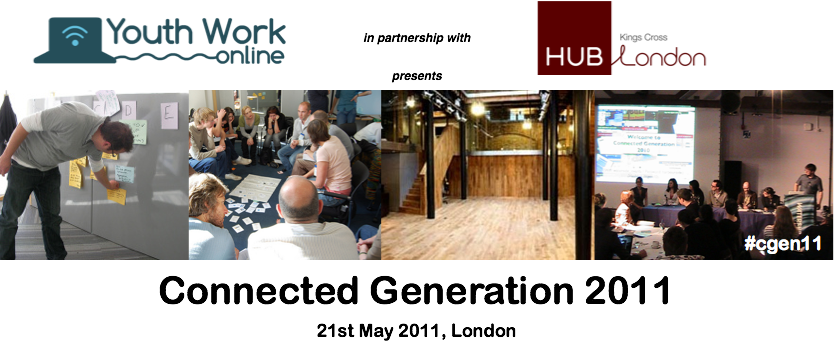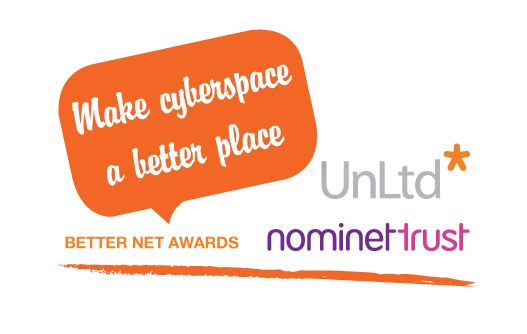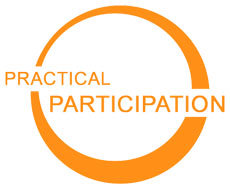[Summary: Notes for a presentation on ‘Generation-Y’ and public services hosted by Institut de la Gestion Publique (Institute for Public Management), delivered on 27th June 2011, Paris]
Below is a copy of the draft I wrote for a round-table discussion starter at today’s ‘Generation-Y and public services’ conference hosted at the Institut de la Gestion Publique in Paris. Whilst most of the conference had explored issues around ‘Generation Y’ as employees in public service (disappointingly without, I must add, any other members of ‘Generation Y’ taking part!), the round table I took part in looked at how government can engage ‘Generation Y’ in policy making. I promised to share this draft, and to add a few links to further resources, which I’ve done below. You can find a write-up of many of the other sessions in Andrew Krzmarzick‘s excellent live-blog on the GovLoop site.
Generation Y and Digital Participation: RIGP 2011
“It is a pleasure to be speaking with you at today’s conference.
I get involved in a number of different youth policy related events and activities – and having just turned 26, I often have to check the definition of ‘youth’ being used to see whether I quality as part of the ‘youth caucus’, or whether I’m really there solely as a contributor or facilitator. Fortunately, when people define ‘Generation Y’, the usually pick either 1980 or 1985 as the years when technology started to become ubiquitous. These years are used to pick out the birth of a generation who came of age with the Internet, mobile phones, multi-channel and interactive media all around: so fortunately, with a 1985 birth date, I don’t need to always check whether or not I’m ‘in’ Generation-Y. And yet, defining a generation: drawing a boundary around it and assuming that there is more similarity between children, young people and young adults born over a particular span of years, than there is similarity between certain sections of that group and other age groups; or emphasizing the commonality of the generation over it’s diversity, can be dangerous and misleading.
The digital platforms that particular groups of teenagers or young adults choose to use, and how they choose to use them, will be affected not only by their age, but by their socio-economic status, by the pressing concerns at particular stages of their lives, and by ‘network effects’. As an aside: understanding networks and network effects is really important to understanding contemporary communication. If, for example, the thing that is most important to you right now is communicating with friends, you will choose the communication tools that best allow you to do that. That’s why we saw students adopt Facebook on campus when it first emerged; and why we now have lots of anecdotal accounts of young people in the UK, particularly teenage girls, turning to the Blackberry phone and BBM, Blackberry Messenger, as their communication platform of choice: it offers low-cost instant messaging, with the important advantage that you can control who is on your friends list and retain some privacy – something increasingly important as Facebook has shifted it’s privacy settings to a more public default and become a place where parents are increasingly joining the network.
Even when we understand that Generation-Y is diverse in itself, and that no-one approach will engage a whole generation, we also have to also recognise that communication technologies, whilst often adopted and explored en-masse first by young people, diffuse throughout society over time. New communication technologies create new possibilities for all of us. The pioneers of new approaches to policy making come from all age groups. Just over a week ago I was at Local Gov Camp – a Saturday gathering of committed local government technologists in Birmingham, giving up their own time to talk about digital possibilities for government practice. I looked around the room, and it wasn’t age that defined the community: it was a commitment to improving public services, and an interest in how communication technologies could help us do that.
So, I’m not going to talk much about Generation-Y in what follows. But I will talk about two things: (1) how technology creates new opportunities for public participation in policy making; and (2) how it creates new ways to include young people – not as generation-Y, but as a group who have consistently been excluded from policy making.
Identifying the gap
There is undoubtedly a gap between the way public services communicate, and the way many citizens want to communicate with their government. And that gap has been created, to a significant extend, by communication technologies.
But we can understand that gap in two different ways. Firstly, we could understand it as a channel gap. Government is not communicating through the right channels. It’s still using letters, leaflets, posters and broadcast channels as it’s default mode of communication. Where government is online, which is almost always now is, it creates static websites with limited opportunities for interaction. The channel gap analysis highlights the need for government to be present where citizens are – taking government onto YouTube, to Twitter and to Facebook – providing services on digital TV and mobile phones – and being more dynamic in how government information is presented. However, the gap is not just about the channels through which government communicates. Having a Facebook page isn’t digital government. Digital technology has also created an expectations gap.
The expectations gap is far harder to bridge: but much more important to address than just the channel gap. It involves far deeper organisational and cultural change in the way we do government. What new expectations have we got to meet?
1) An expectation of open information – with the cost of publishing brought near to zero – the expectation is that all content should be available just a search query away. Yet much public sector information remains hard to find. And whilst some areas of the public sector are embracing open data, data on what government is doing remains hard to find. And there is an expectation of personal information too: when I order a product from an online retailer, I can track it’s progress to me – yet when I recently had to order a form from the UK Tax Office which I was promised would be sent out by the next post, I had a frustrating wait of two weeks with no way of checking whether it had been sent and lost in the post, or simply not despatched yet.
2) An expectation of comment – research by Consumer Focus found that “UK consumers are leaving well over 100 million comments a year” on the web about services they have received. A chunk of those will be about public services. Consumer Focus also found people are far more likely to trust what other consumers are saying about a service than what the company (or government) are saying. Just about everything on the modern web has a comment feature, or a ‘like’ button, or some way to leave your mark on it or share it with your network. How often is that the case with government spaces?
3) An expectation of interactivity. Getting good information online and making space for citizens to leave comments as feedback, or as peer-support for others, is relatively easy. Meeting expectations of interactivity requires more attention. More than once I’ve posted comments on Twitter mentioning particular companies and problems I’m having with their services, and within minutes I’ve had replies from those companies offering to help solve the problem. The expectation of responsiveness created by instant communication highlights the slow replies I get when I contact my local council, or the even slower replies (if there is any feedback or reply at all) when I engage in a public consultation.
4) An expectation of collaboration. When communication was slow it made sense to to package problems up into processes based on a limited number of communication transactions. I fill in a form or respond to a survey; government thinks about it; maybe a request for more information comes out; I reply; a decision is made. A slow process, and one of interaction rather than collaboration. But when tools like Google Documents hold out the promise of collaborating together instantly on documents and plans; when I realize that I can input better into the policy process by joining online discussions rather than filling in consultation forms; and when digital technologies allow communities to self-organise and take ownership of their own problems, the need is for government able to collaborate through new communication tools, not just use some new channels for old processes.
These are by no means universal expectations. Many of the most excluded in our societies have learnt to expect very little from governments when it comes to participation and policy making – and we must pay attention to managing expectations – both by helping the most demanding to understand (and engage with) the challenges of government, and by working to raise the expectations of the most disadvantaged. However, these expectations, perhaps more common amongst younger demographics who don’t have other expectations to replace them, but expectations found across society, present challenges for governments to meet.
A mix of approaches – engaging children and young people
I want to turn now to look at a number of quick case studies of online engagement, and to talk about how they offer opportunities to challenge age-discrimination by involving young people in decision making. When I talk about young people I’m interested not only in young adult employees, but also children and teenagers. I believe that children, young people and young adults are all key stakeholders in policy-making and should have say in decisions that affect them, and affect society as a whole. I also believe children, young people and young adults all bring particular contributions to policy making and are an asset to be drawn upon.
I’ve got three brief case studies: one of individual engagement; one of policy opened up for comment; and one of collaborative policy discussions.
Firstly, three years ago I was working with youth workers (I think the French term for this group of professionals may be ‘social pedagogue’) who wanted to involve excluded teenagers in decision making. They found that, with young people living across a wide geographical area, it was expensive to get groups together to talk about issues face-to-face: and the inconsistency of the groups who could get together at meetings made developing conversations difficult. Based on feedback from young people, they started to explore using social network sites like Facebook as a low-cost tool for holding discussions and engaging (PDF). It involved the youth workers switching to a new channel to engage with young people, and to support them to identify how to get their views into the policy process. Some of that work feeding into the policy process still involved writing reports and making presentations – but it was facilitated online. But more than a new channel, it involved youth workers finding new ways of working and developing their skills and working practices in order to operate in a new environment: checking in regularly with young people. The choice of Facebook worked because the workers understood it was a space based on relationships. There are many different ways to be present in Facebook, from using it as a broadcast channel, through to engaging in participative conversations. The workers had to identify the right approaches for their participation project. (Useful links: See www.youthworkonline.org.uk for a wealth of sharing learning around youth work engagement with digital communication. See also other posts here on ‘Youth Work 2.0’)
Secondly, and this was specifically mentioned in some of the conference literature, the UK Government has experimented with a number of initiatives to get citizens to comment directly during the policy making process. These started at least under the last government, with some great projects exploring ways of publishing draft government reports for paragraph-by-paragraph commenting. One of the high-profile initiatives of the current government though was to ‘crowd-source’ ideas for public spending cuts in an initiative called the Spending Challenge. Citizens were asked to submit proposals for areas where the government could save money. Submissions were published online, and visitors to the site could vote for those proposals they thought most interesting. Whether or not the initiative was a success depends on who you talk to. Whilst some have objected that many of the comments were abusive, racist or otherwise offensive, it had 1000s of serious submissions, and similar exercises have been tried with suggesting laws to be removed, and a currently regulation-focussed exercise, the ‘Red Tape Challenge’, is ongoing. The team behind the initiative also worked hard to turn it from commenting into conversation – posting regular blog posts updates highlighting the way they were analyzing the input, and what themes they were identifying to take forward into future discussions. (Useful links: See this page for a government analysis of the initiative outcomes and costs; and these posts from delib who built the platform. For examples of different approaches to comment-able policy documents, see the community run WriteToReply, or the Read and Comment platform increasingly used by government departments, and initially developed based on pilot projects within the civil service)
My own experiences of an earlier, similar project*, inviting comments on the coalition agreement, also highlighted some very positive interactive government when I noticed that the terms and conditions prohibited anyone under 18 commenting on the site without parental consent. Under 18s can join the army, have sex, drive a car, pay tax – and many other things, without parents consent – so to need parental consent before you can engage in public policy making seemed wrong. I wrote a brief blog post to that effect. And very soon after the Central Office of Information, who were responsible for the terms and conditions, got in touch asking for more details of why the should, and how they could, update them. As I understand, through a brief collaboration, started on a blog and by Twitter, and continued by e-mail and phone-calls, this ‘accidental’ exclusion of young people through the selection of terms of conditions was removed, and the default terms and conditions for future projects updated.
More work is still needed to make sure the language of initiatives like the spending challenge is accessible to young people, and to equip intermediaries to support young people to engage with them, but at the very least removing artificial barriers to young peoples’ involvement is important.
Thirdly, I want to mention two recent experiences using collaborative online documents in policy-focussed discussions with teenagers and young adults. With the Dynamic Youth Coalition at the Internet Governance Forum in Vilnius last year, and the Youth Forum of the Commonwealth Local Government Forum in Cardiff this year, we’ve used online documents allowing anyone present at the event (or participating from home online) to collaboratively draft the outcome statements. Everyone was editing the same text from their own laptops – and common power dynamics that mean those with the loudest voices shape the text most of all – were challenged. To often in participation processes we find authorities gate-keep the shaping of the policy itself – preferring to ask people for their views, and then go away and remain in control of final texts and documents. Yet with digital technology the chance for real collaborative drafting arises – and in some contexts has a lot to offer.
Of course, these different approaches introduce their own power dynamics – but they also offer great opportunities for improved participation.
If I had longer I would sketch out for you how different digital approaches to participation can fit together – offering young people a range of choices about how to get involved in civic life, and creating a ‘pathway of participation’ that allows both broad and deep engagement through digital media. But for now I will close with some very brief remarks on moving from where we are now to being ready for this digital world.
Addressing the barriers
When your analysis is based on the idea of a channel gap, it’s natural to think the solution lies in investment in new platforms or channels for communication. The real investment needs to be in culture change and skills. I’ve been asked before what is the biggest barrier to government engaging with ‘generation Y’, and I’ve not been able to point to one big barrier. Rather, there are 100s of small ones. Some are technical: for example, if you can’t get a picture of yourself loaded from a digital camera onto your office computer, you can’t have a picture next to your online profile, and that changes the nature of engagement you will have in an online forum. Others are organisational: it takes too long to get sign off to be able to hold a digital conversation. Others are cultural: a fear of failure, when being allowed to, in safe circumstances, fail and learn from failure is a key part of collaborative conversation.
If there has been one big omission however, by the advocates, of all ages, calling for us to take advantage of digital technologies to improve government, it is that they have neglected established models of organizational change and have assumed that others will simply follow their lead. Connecting digital possibilities, with established processes and strategies for managing change: ensuring all of government is able to engage with new tools and ways of working; and making sure citizens and civil servants in all generations can understand this as an opportunity, not a threat; is one of our biggest challenges.”
(*Note, in the talk I incorrectly suggested that the conversation around T&Cs took place in relation to the spending challenge. In reviewing blog posts I’ve realised I was incorrect on that assertion).







 When I started out researching
When I started out researching 




